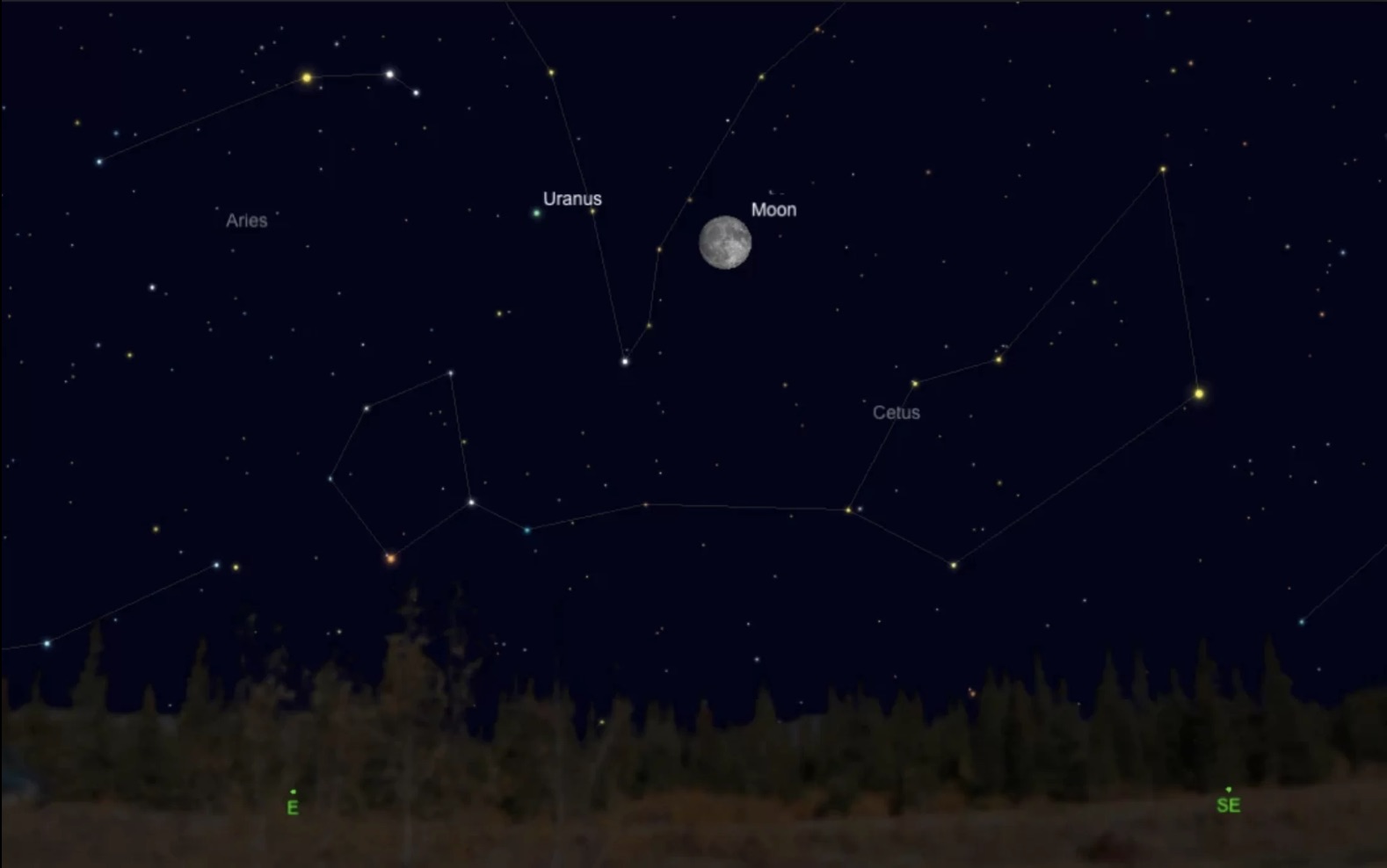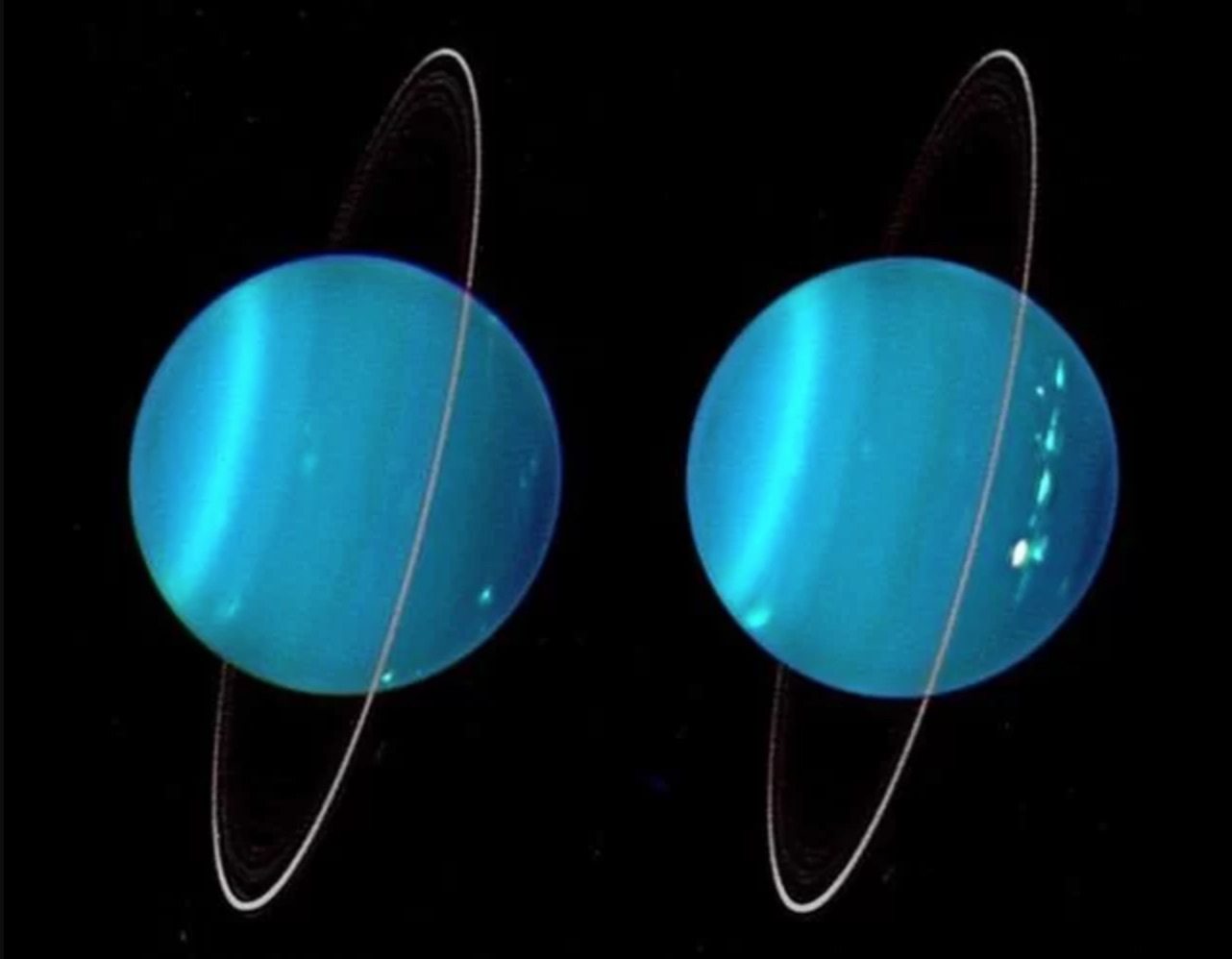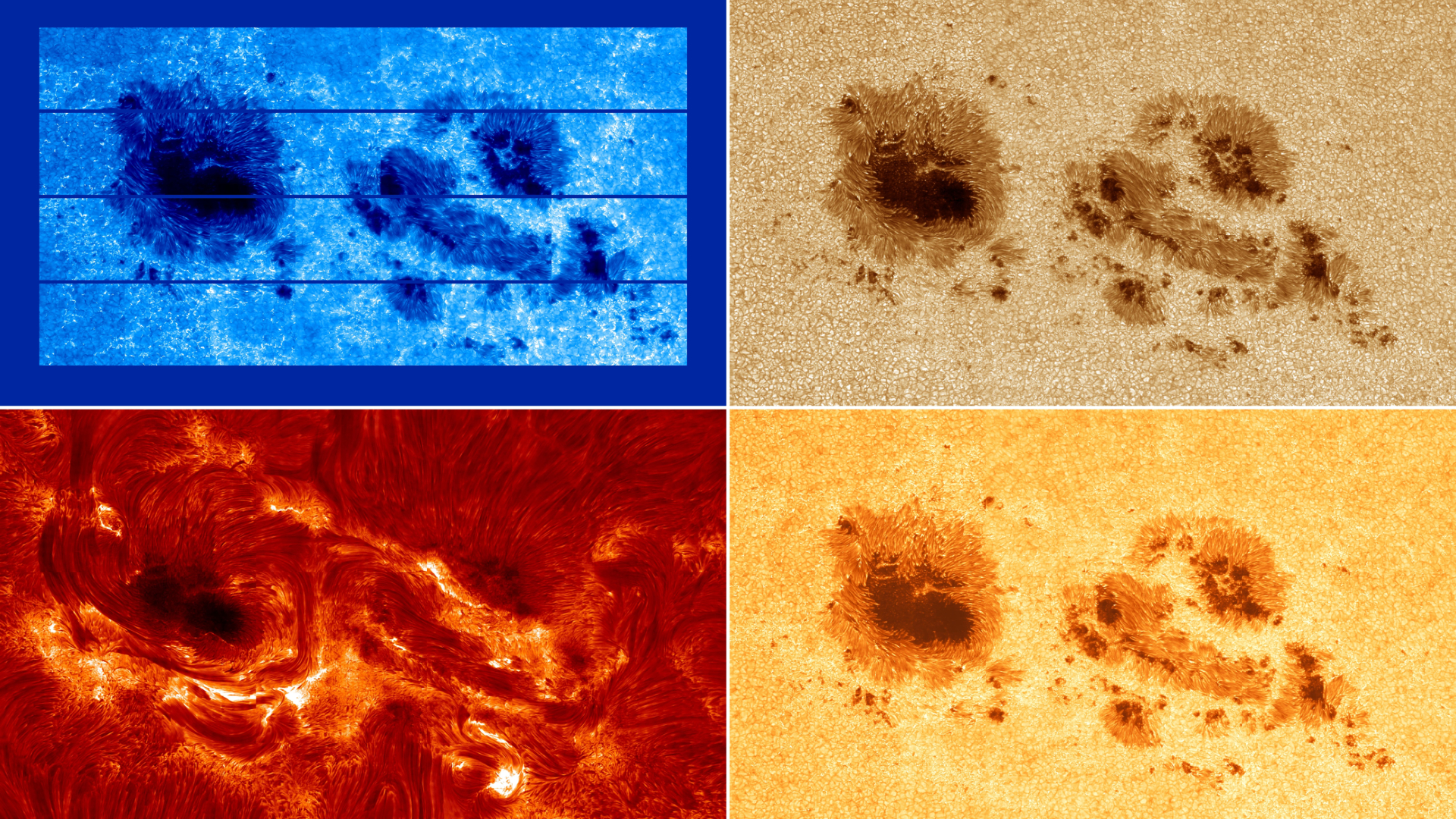Want to See Uranus? A Full Moon Lights the Way
If you want to observe the frigid planet Uranus this week, look toward the full moon.
The Hunter's Moon rises tonight (Oct. 24) — in New York City it comes up at 6:30 p.m. local time — and will sit by Uranus, which reached a prime viewing location at opposition yesterday. This is a neat cosmic coincidence that makes finding Uranus easier, but to see Uranus in its full glory, you'll have to wait a few days.
A planet is easier to observe when it's at opposition. Since Uranus will appear directly opposite the sun in Earth's sky, Uranus will rise as the sun sets and will be visible all night. The gas giant planet will be above the horizon all night long in most locations. [The Moon: 10 Surprising Lunar Facts]
The moon will be in the constellation Cetus (the Whale) when it makes its close pass to Uranus, according to imagery from the app SkySafari.
And why wait a few days after the full moon to check out Uranus? Well, the glare from the Hunter's Moon will make it tricky to see the planet, according to Space.com columnist Chris Vaughan from the app SkySafari. But do gaze up at Uranus! This is the brightest time to view the planet, but binoculars are recommended.
The seventh planet from the sun is peculiar. For one, it rotates on its side. Earth more or less rotates like a basketball spinning on the finger of a Harlem Globetrotter, and Uranus spins like a bowling ball. Uranus is also much colder than Neptune, a planet much farther away from the sun. Some scientists postulate that an impact from a rock twice the size of Earth caused both circumstances.
Follow Doris Elin Salazar on Twitter. Follow us @Spacedotcom, Facebook and Google+. Original article on Space.com.
Breaking space news, the latest updates on rocket launches, skywatching events and more!

Doris is a science journalist and Space.com contributor. She received a B.A. in Sociology and Communications at Fordham University in New York City. Her first work was published in collaboration with London Mining Network, where her love of science writing was born. Her passion for astronomy started as a kid when she helped her sister build a model solar system in the Bronx. She got her first shot at astronomy writing as a Space.com editorial intern and continues to write about all things cosmic for the website. Doris has also written about microscopic plant life for Scientific American’s website and about whale calls for their print magazine. She has also written about ancient humans for Inverse, with stories ranging from how to recreate Pompeii’s cuisine to how to map the Polynesian expansion through genomics. She currently shares her home with two rabbits. Follow her on twitter at @salazar_elin.


